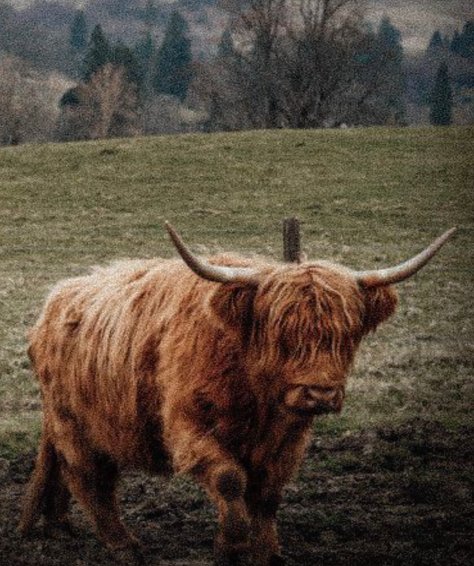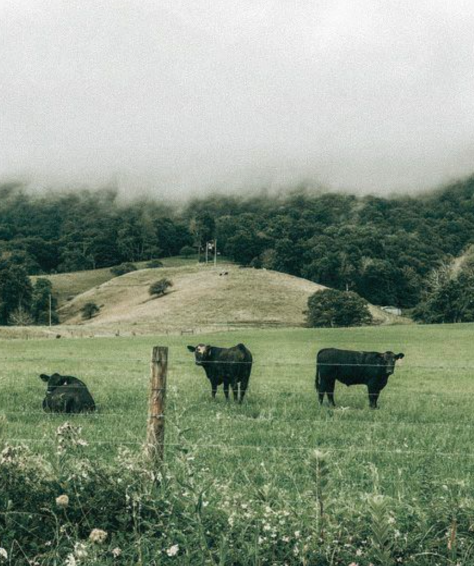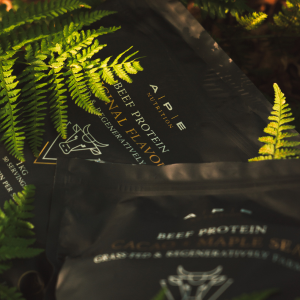Why You Should Be Drinking Raw Milk & Eating Raw Dairy…
Milk and dairy are powerfully nutritious foods. However today most dairy products are sold after being pasteurised and homogenised. These processes destroy a lot of beneficial nutrients and turn what is a superfood in its natural (raw) state, into something that can be detrimental to health.
We’re told that dairy is pasteurised and homogenised for our safety. However, although this was the case at one point in time, it’s no longer necessary if the cattle are healthy. Therefore although we are massive proponents of raw dairy, the only caveat is that you MUST obtain it from a regenerative farm where the cattle are living a natural, stress-free life outdoors and eating grass.
To understand why raw dairy was banned in the first place, here’s a quick summary of the backstory… During the industrial revolution of the 1800s, people moved into cities and so did their cows. As a result the cows started living a less natural and more stressful life and eating an unnatural diet of grain instead of grass. This made the cows sick and when people consumed their milk raw, this passed on the illness. As a result, regulations were brought in to pasteurise and homogenise the milk.
Although plenty of farmers today still sell raw milk without issue, thus proving that when it comes from a healthy animal there’s no need for pasteurisation or homogenisation, this law has never been reversed. That said, you can still buy raw dairy products legally in the UK if you source them directly from the farm where they’re produced. See the bottom of this article for tips on how to source raw dairy in the UK.
So what are the benefits of milk / dairy generally?
Milk and dairy whether it’s raw or not has some amazing properties. For example, it’s a great source of bioavailable protein (meaning it contains all essential amino acids), so can trigger protein synthesis and act as a building block for protein within the body. It’s also a really good source of a wide variety of micronutrients, including the fat soluble vitamins A, D, E and K2 as well as the water soluble B vitamins. However, it’s most well known for being the best source of calcium and phosphorous, two minerals that are vital for bone health and strength.
Interestingly there’s not many other sources of bioavailable calcium in food. After dairy, bones themselves (bone broth, bone marrow or actually eating small bones when consuming fish like sardines) or egg shells are the best sources. It’s really rare that people eat bones today, never mind egg shells and with less and less people eating dairy, it’s no wonder bone degenerative issues like osteoporosis or on the rise.
If you’re not consuming a few cups of dairy per day as well as not including bones in your diet, it’s really important you’re getting your calcium and phosphorous from elsewhere to make sure your bone health doesn’t suffer. That’s why we created our Whole Bone Matrix. Made with grass-fed and finished bovine bones from a regenerative farm, this product supports optimal bone mineral composition and overall bone strength. Our complex contains all the natural elements of healthy bone including the essential minerals calcium and phosphorous (in their ideal ratio of 2:1), growth factors, type I collagen, glycosaminoglycans and a broad range of other trace elements.
This product was designed for anyone that doesn’t get enough calcium through their diet, or those suffering from bone degenerative issues or recovering from broken bones.
***Note, green leafy vegetables are NOT a good source of calcium and phosphorous as they also contain anti-nutrients that block their absorption. Even worse are calcium supplements and synthetic calcium added to fake milk products as these aren’t just bad sources of calcium but they don’t contain phosphorous. This means that they overload our bodies with calcium, which can actually cause bones to weaken. Also, because synthetic calcium doesn’t come with vitamin K2 (as it does in raw dairy and anywhere calcium is found in nature), the calcium can go to the wrong places such as the kidneys or arteries and cause issues. However when Calcium is consumed with K2, it goes to the right places within our body (bones and teeth).
So why drink raw milk / dairy compared to conventional?
Raw milk (and dairy in general) is better than milk that’s been pasteurised and homogenised (which is the standard today) for your health and the environment, whilst also supporting local farms. Here's a breakdown explaining why:
- Digestion // raw milk is way easier to digest than milk that’s been pasteurised and homogenised. This is because enzymes (which help us break down food) such as amylase, which are destroyed during the pasteurisation (heating) process are abundant in raw milk. Amylase helps us break down starch into sugars. The bacteria in raw milk, which is also destroyed during this process helps with the creation of lactase in our intestines. Lactase is needed to break down the lactose in milk. If lactose isn’t broken down, it ferments within us, causing the symptoms of lactose intolerance (indigestion, gas, bloating, etc).
*A survey commissioned by the Weston A Price Foundation found that out of 700 families, 80% of lactose intolerant people didn’t experience symptoms with raw milk.
- Immunity // immune boosting compounds such as lactoferrin are greatly reduced by pasteurisation. Lactoferrin binds with iron, reducing the proliferation of iron binding pathogens. It also has antiviral and antibacterial properties.
- Nutrients // raw milk has been shown to have higher levels of vitamins and minerals, as well as a better omega-3 to omega-6 ratio.
- Environment // to reiterate, it’s vital that if you do get raw dairy, you get it from cattle that have been raised on a natural diet of grass to ensure it’s safe. Grass-Fed cattle have been shown to have a positive impact on the environment in terms of reducing carbon emissions, diversifying wildlife, enhancing soil health and reducing flooding.
- Supports Local Farms // opting for raw milk from your local farmer as opposed to mass produced milk from the supermarket puts money back into your local community and helps put food on the table of people running a small business.
If you’d like to get hold of some raw dairy, the best place to start is seeing if you can pick some up fresh from a local farm. Consuming raw dairy fresh is better than frozen as freezing destroys a lot of the enzymes. For those living in the UK, this is a great website where you can search by country for any farms selling raw milk near to you: http://rawmilk.simkin.co.uk/what-is-raw-milk.html
In my experience most places that sell raw milk will also sell other forms of raw dairy; cheese, cream, etc. However Waitrose and farm shops in general tend to have a good selection of raw cheese at least. Although they won't sell milk or cream as it's not legal to sell, unless it's sold directly from the farm where it's produced as mentioned above.
If you don’t have a farm close to you, you can still get hold of regenerately farmed raw milk from Hill Farm Real Food: https://hillfarmrealfood.co.uk/collections
Do you drink raw milk? Let me know in the comments below.






